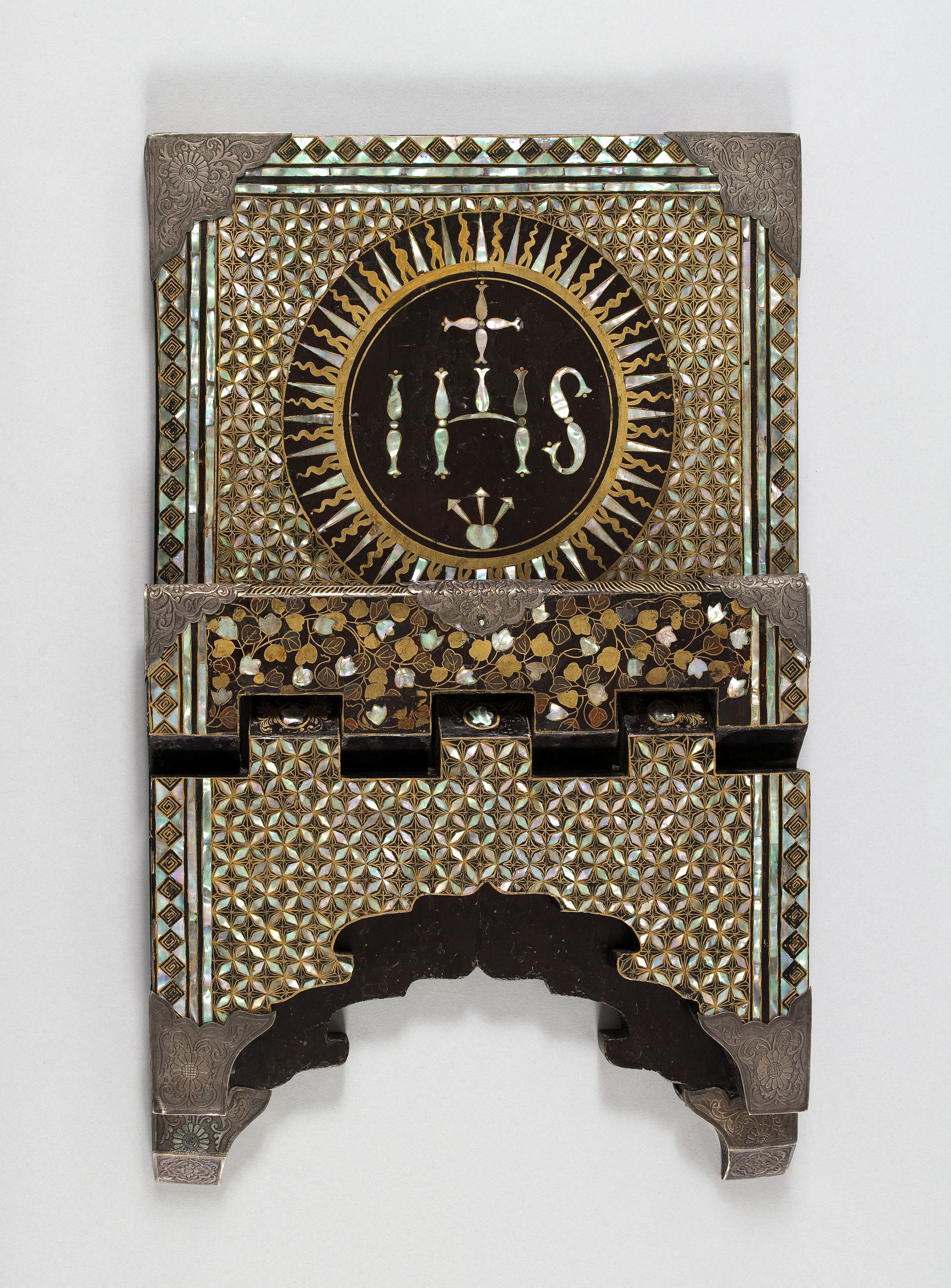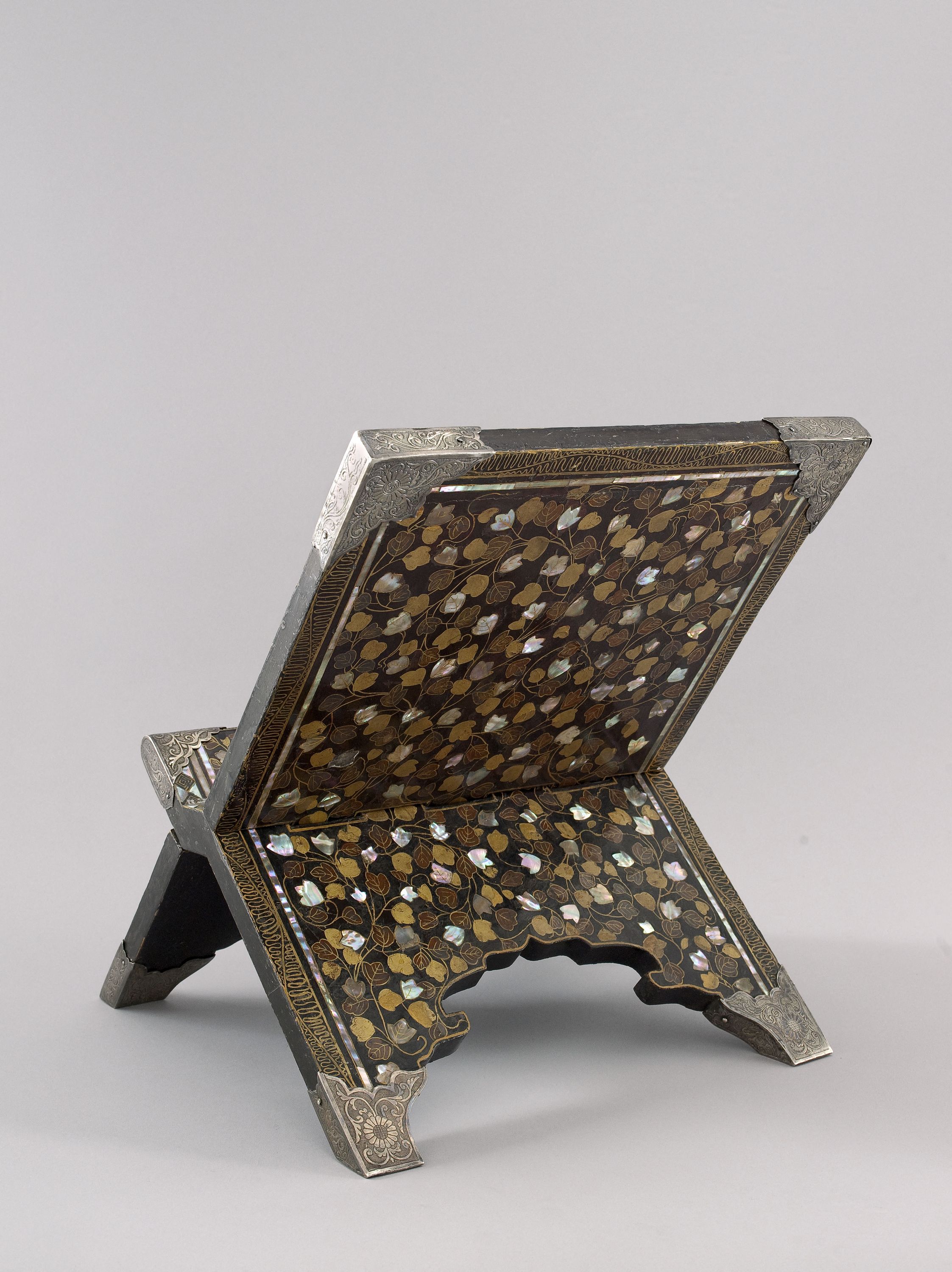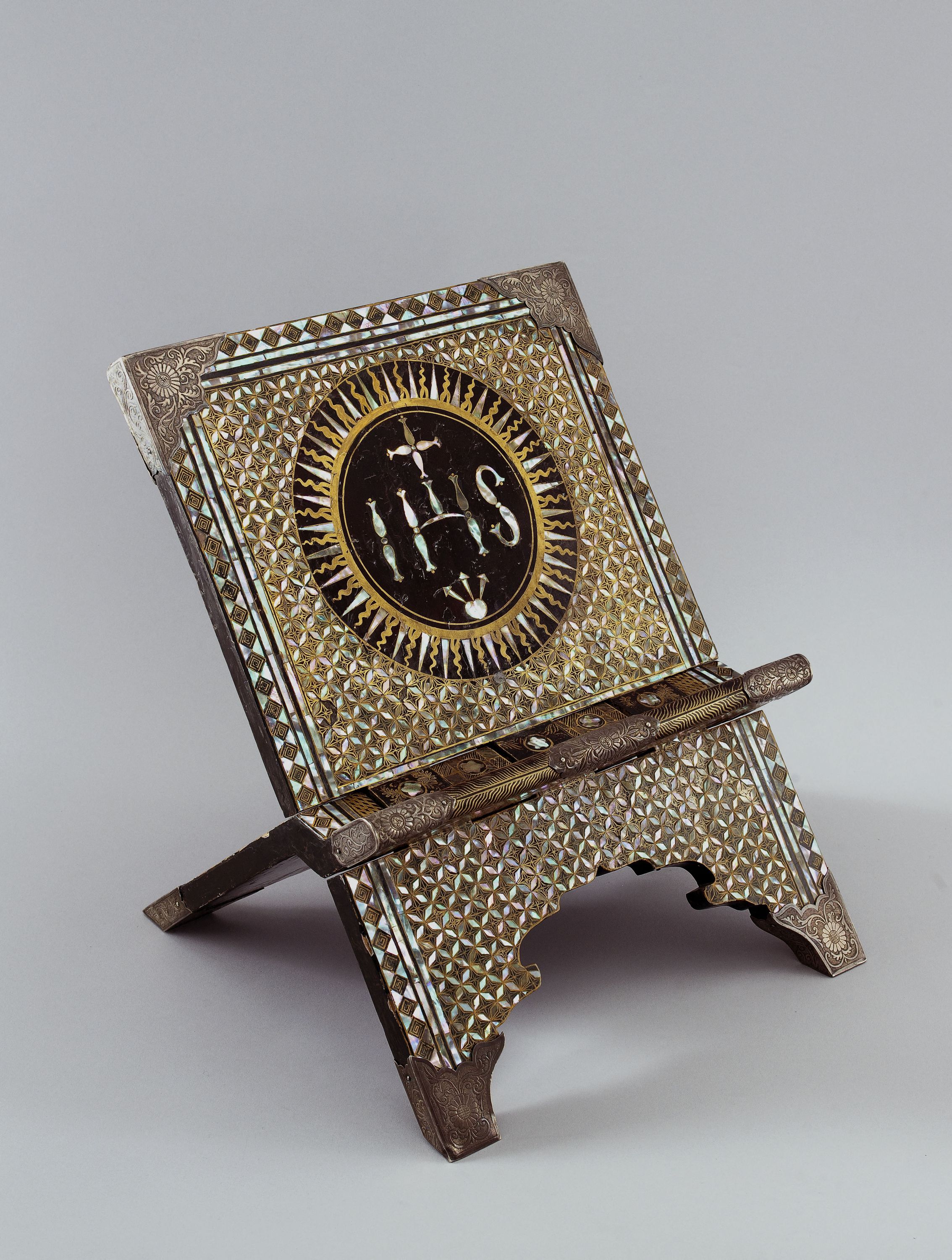
Lutrin pliable (shokendai 書見台)
Bois (matériau), Laque, Nacre, Métal, Argenture
Pupitre
Insigne de la Compagnie de Jésus (IHS) sur fond de perles enlacées et motif de Kuzu
Achat
M.C.2009-1
This book stand is executed in the Nanban (“southern barbarians”) style that emerged after the arrival of Europeans and particularly the Portuguese. It is a Christian liturgical object used during the celebration of Mass. Its shape is inspired more from the Islamic Koran stand (rahl) than traditional Japanese or European book stands.
It was designed to be easily transported and is made of two blocks of Japanese cypress (hinoki) wood coated in black lacquer (urushi), with an application of lacquered gold decoration in low or “flat” relief (hiramaki-e) and iridescent abalone inlay (awabi).
In the central upper part, the decoration features a radiating sun, with half its rays, in mother-of-pearl, having a geometrical triangular shape, and the others forming undulating flames in gold. The Christogram (“IHS”) in the centre, between the cross and the three nails piercing the Sacred Heart, is sometimes interpreted as the abbreviation of “Jesus, Saviour of men” (Iesus Hominum Salvator), the emblem of the Jesuits. As for the rest of the surface, the top side is almost entirely decorated with an interlacing of pearls (shippōtsunagi mon), a auspicious motif, while the decoration of the underside features flat floral patterns (kuzu) framed with plant scrolls (karakusa mon).

